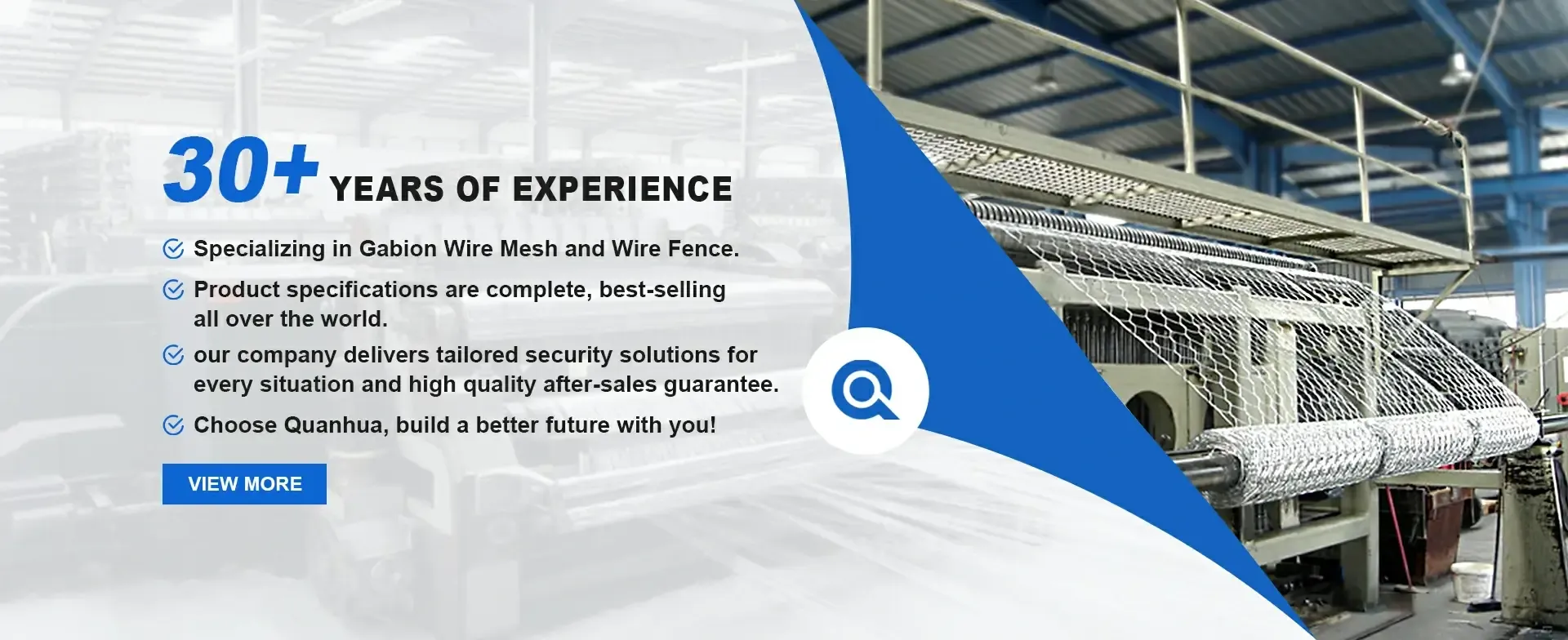marras . 01, 2024 17:37 Back to list
Gabion Revetment Solutions from Leading Manufacturers for Enhanced Erosion Control
Gabion Revetment Manufacturer Crafting Resilient Solutions for Erosion Control
In the modern world, where environmental challenges such as soil erosion and flooding are increasingly prevalent, gabion revetments have emerged as a reliable solution. As a result, the demand for capable gabion revetment manufacturers is on the rise. This article explores the significance of gabion structures, the manufacturing process, and the benefits they bring to civil engineering projects.
Gabions, essentially wire mesh cages filled with stones, serve multiple purposes in erosion control, protecting riverbanks, slopes, and coastlines from the damaging effects of water flow. Their open structure allows for the natural filtration of water, reducing pressure against the soil beneath. As a manufacturer, delivering high-quality gabions is essential, not only for ensuring structural stability but also for promoting environmental sustainability.
The manufacturing process of gabion revetments involves several key steps. First, durable galvanized steel or PVC-coated wire mesh is used to create the cages. This choice of material is critical as it ensures longevity and resistance to corrosion, particularly in harsh weather conditions. The mesh is then shaped into boxes or mattresses, depending on the project's requirements.
gabion revetment manufacturer

Once the frames are constructed, they must be filled with appropriately sized stones. This is vital for maintaining the integrity of the structure, as the weight of the rocks provides the necessary resistance against erosion. Quality control during this phase is crucial; manufacturers must ensure that the stones used are of suitable size and density to meet engineering specifications.
Moreover, gabion revetments are known for their versatility. They can be customized to fit specific project needs, whether it be riverbank stabilization, slope protection, or even decorative landscaping. A notable benefit of working with a proficient gabion manufacturer is the ability to create tailored solutions that address unique geographical and environmental circumstances.
The ecological advantages of using gabions cannot be overlooked. Unlike traditional concrete structures, gabions allow vegetation to grow in and around them, promoting biodiversity and habitat restoration. They can integrate seamlessly into natural landscapes, making them a preferred choice for environmentally conscious projects.
In conclusion, gabion revetment manufacturers play a pivotal role in creating effective solutions for erosion control and environmental sustainability. With high-quality materials and expert craftsmanship, these manufacturers ensure that gabion structures not only perform their intended functions but also harmonize with the environment. As the challenges posed by climate change continue to evolve, investing in resilient and eco-friendly infrastructure has never been more essential. Embracing gabion technology could be a significant step toward a more sustainable future for civil engineering and land management.
-
The Role of Galvanized Gabion Mesh in Riverbank Protection
NewsJun.26,2025
-
The Role of Gabion Basket Raised Bed in Sustainable Gardening
NewsJun.26,2025
-
Quality Assurance of Wire Mesh Gabion Baskets
NewsJun.26,2025
-
Installation Guide for Welded Gabion Box
NewsJun.26,2025
-
How to Choose the Right Gabion Box
NewsJun.26,2025
-
Different Types of Gabion Wire Mesh
NewsJun.26,2025
-
Why PVC Coated Gabion Mattress Is the Best Solution for Long-Term Erosion Control
NewsMay.23,2025






